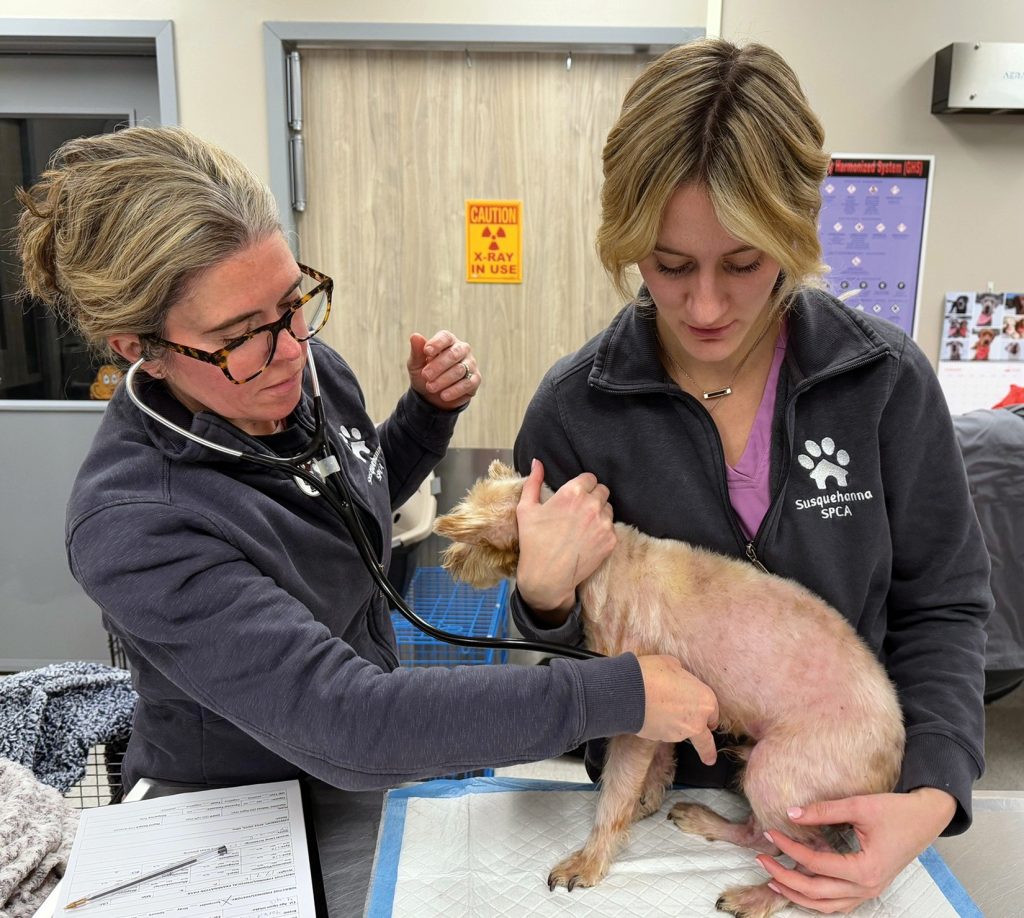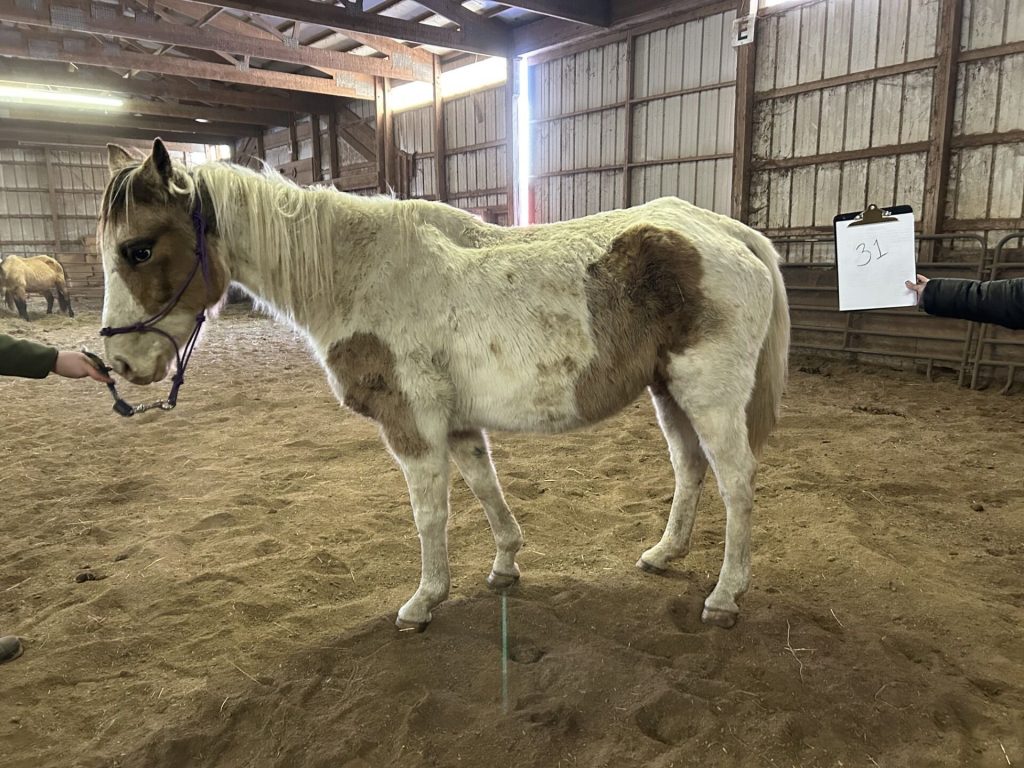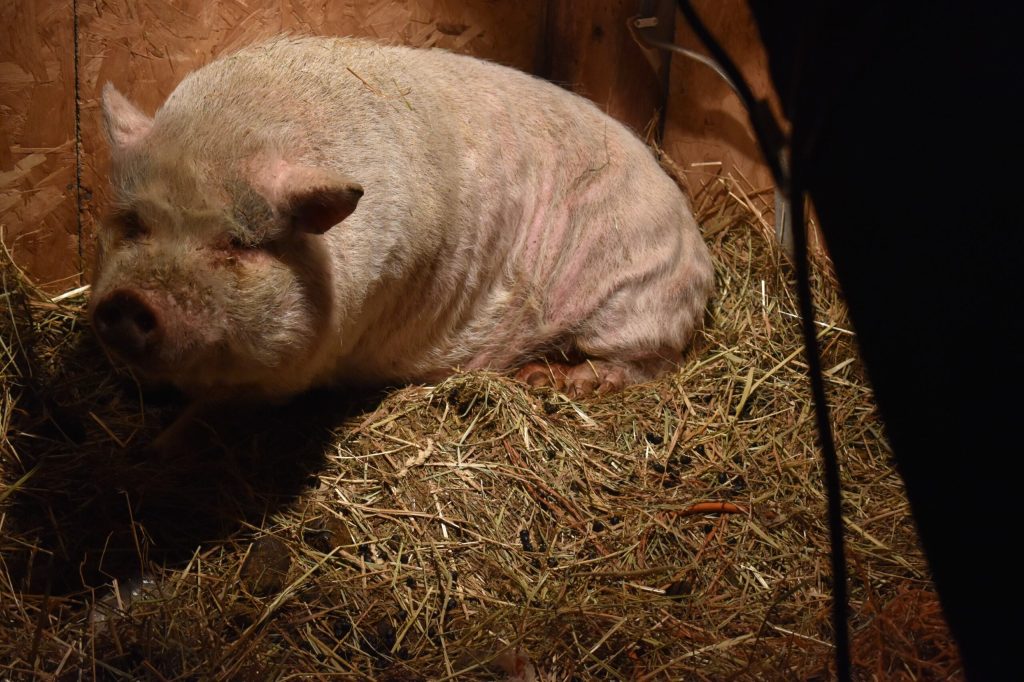
Animal Cruelty, Neglect Getting the Attention of Area Agencies
By DARLA M. YOUNGS
COOPERSTOWN
Since formation of Otsego County’s Animal Cruelty Task Force in February 2019, almost six years ago to the day, cases of suspected animal cruelty and neglect that may once have gone unreported in the region are now seeing the light of day.
Local law enforcement officials, working closely with the Susquehanna Society for the Prevention of Cruelty to Animals, have been addressing cruelty complaints by performing wellness checks and, when necessary, seizing animals that are sick, injured or improperly cared for.
Currently, having been called upon by the Otsego County Sheriff’s Office and the New York State Troopers, the SQSPCA is responsible for the care and wellbeing of animals from three such seizures.
On December 5, 2024, five adult dogs were seized from a home in Worcester following multiple cruelty reports and after which two deceased dogs were found on the front porch. One of the dogs has since had puppies, bringing the total to 15 dogs in care.
On the evening of Wednesday, January 22, 68 animals—including 30 horses, a yak, seven dogs, three cats and multiple farm animals—were removed from a property in Norwich and placed in the care of the SQSPCA, working closely with rescues including Equine Rescue Resource Inc. and Mustang Valley Sanctuary. Multiple dead animals were found on the property as well, according to SQSPCA Executive Director Stacie Haynes, who said many of the rescued animals were emaciated and described the conditions in which they were being kept as unlawful and unacceptable.


Both of those cases are ongoing and, in addition, the SQSPCA is currently assisting law enforcement in a third case of suspected animal cruelty, involving a dog that was brought to the shelter dead on arrival.
Haynes, who was instrumental in forming the original task force—along with Otsego County District Attorney John Muehl, Otsego County Sheriff Richard J. Devlin Jr. and area veterinarians—is glad that the work is continuing, and considers it to be paramount to the SQSPCA mission.
“The animal cruelty task force is still a thing, though we don’t have meetings. It’s more of an animal cruelty framework at this point,” Haynes explained. “We have incredible support from the Sheriff’s Office, the district attorney and his team, and we have added Otsego County Emergency Services and Social Services to the partnership. The framework exists now as our response to suspected cruelty and it works well.”
Sheriff Devlin also recognized the success of the program.
“With the county task force, we have publicized and promoted animal cruelty efforts and options for assistance when one feels overwhelmed. There is help for people in need caring for their animals before it gets to being unmanageable,” Devlin said. “People are calling in more complaints due to the awareness and positive outcomes the task force has worked together on.”
However, the uptick in cases over the last six years has become something of a drain on the shelter’s resources.
From 2015-2017, the SQSPCA assisted with just six animals seized or in custody. In 2018, that number jumped to 95 animals. Over the last six years, since the meeting of the minds in 2019, the shelter has averaged 119 animals seized or in custody annually, with the largest spike last year at 267 animals. As of February 15, shelter staff have already assisted law enforcement with 71 such animals this year.
“It’s always a challenge, because the same crew that is willing to go out and conduct a rescue until 1 a.m., when it’s 10 degrees outside, are the same individuals responsible for our-day to-day regular business here at the shelter,” said Haynes. “When we aren’t involved with a big rescue, we are busy enough. Adding a rescue means working many nights and weekends to make it all possible.”
Once the animals are officially under their care, SQSPCA staff make sure they have a baseline veterinary profile on each animal and any emergencies are addressed right away.
“With our state-of-the-art medical clinic and full-time medical team, we have the ability to run blood tests and perform X-rays and ultrasounds if needed,” Haynes said. “The next step is treating for parasites and vaccinating as appropriate. We will also begin treatment for any animal in need of medical care beyond the initial exam.”
In addition to stretching her workforce incredibly thin, animal rescue comes at a hefty cost, Haynes said.
“For the Norwich rescue alone, we are already looking at thousands in expenses,” she explained.
“Expenses include overtime pay for staff, animal hauling fees, veterinary care, boarding fees, supplies, and special equipment for rescue and care.
“We also have to consider our loss of regular income when we must close the shelter in order to catch up after a big seizure,” Haynes added.
Sheriff Devlin’s office feels the pinch as well.
Financially, some of the [Otsego County] cases have resulted in high costs for medical expenses and boarding fees, which are paid out of the sheriff’s operating budget, he said.
“We have one certified animal cruelty investigator, who also conducts routine patrols, so when they are working an active animal cruelty investigation it takes them away from patrol duties,” Devlin pointed out.
To date, the Sheriff’s Office is the only law enforcement body that pitches in to help cover the SQSPCA’s monetary expenditures associated with animal seizure and rescue.
Asked why her Otsego County animal shelter is now assisting with cruelty and neglect cases in adjoining counties, given the drain on manpower, money and other resources, Haynes was very clear.
“We are so fortunate that folks who have been advocating for years are finally seeing law enforcement all across this region take animal cruelty seriously. Because of the work we accomplished through the start of the Animal Cruelty Task Force, we have been ahead in this work here in Otsego County,” Haynes explained.
“As other counties are catching up, they need help. Law enforcement officials are going in, finding animals suffering and in need, and their animal welfare organizations aren’t quite ready to help, lacking the necessary personnel, network, equipment, and supplies,” she continued. “We are going in, taking the lead, and always bringing the local animal welfare organization along in hopes they will be able to grow like we did. Most of them are making progress and we are proud to be able to help them.”
SQSPCA work in Schoharie County has ramped up over the past few months, including a multi-cat rescue and an ongoing case with New York State Police involving 20 dogs.
“Saving these animals is only possible because of the folks who support our organization and believe in our mission—our donors, our volunteers—and because we have an incredibly professional, talented, and dedicated team who find the work to be worthwhile,” said Haynes.
“We could not do what we do without the cooperation of each other’s agency,” Devlin said.
The SQSPCA is located at 5082-5088 State Highway 28, Cooperstown.

